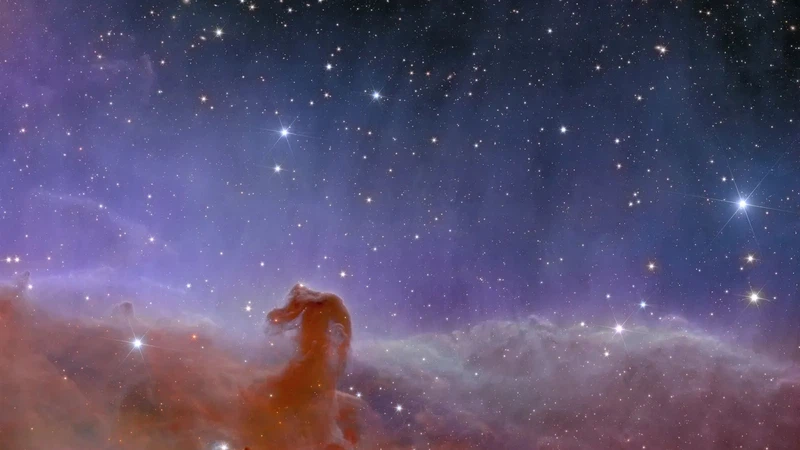Weather of Arabia – The European Space Telescope “Euclid” published its first images of the universe, which showed a nebula resembling a horse’s head in a wonderful way, along with distant galaxies that had not been observed before. This image is a unique window into understanding the universe, and holds “indirect evidence” of the existence of dark matter.
The Euclid mission began in July last year and is carrying out a unique mission aimed at uncovering the mysteries of the universe, including dark matter and dark energy. The telescope prepares a map of a third of the sky, which contains two billion galaxies, to provide the most accurate three-dimensional map of the universe to date.
After the Euclid space telescope reached another telescope, the James Webb, at an observation point about 1.5 million kilometers from Earth, the European probe began sending the first results of its observation. These results were revealed on Tuesday from the European Space Operations Center in Darmstadt, Germany.
In a statement by the head of the European Space Agency, Joseph Ashbacher, he said that these amazing images, revealed by the European Space Operations Center in Darmstadt, Germany, remind us of the importance of space exploration to understand more of the secrets of the universe. One of these images was dedicated to the Horsehead Nebula within the nearby Orion constellation, in addition to images of spiral galaxies and others of an “irregular” nature.
Euclid’s first images are here
These five images illustrate Euclid’s full potential; never before has a telescope been able to create such razor-sharp images across such a large patch of the sky, and looking so far into the distant Universe.
— ESA (@esa) November 7, 2023
Rene Lorig, the project’s scientific director, explained that the most “exciting” image is that of the Perseus Cluster, a distant group that includes more than a thousand galaxies. In the background were more than 100,000 additional galaxies, some ten billion light-years away, that had never been observed before.
The astronomer and physicist at the French Atomic Energy Commission, who is a member of the Euclid Alliance, explained that the unique peculiarity of this telescope lies in its ability to have a wide view “unprecedented in the history of astronomy,” allowing it to explore the early ages of the universe. He pointed out that James Webb, compared to him, appears as if he is “looking at the sky through the eye of a needle.”
Thanks to this wide view, the telescope, which is equipped with two observing devices (optical and near-infrared), can quickly capture high-resolution images. The first five images only took about eight hours.
According to the European Space Agency Euclid, this telescope is considered the “Dark Universe Detective,” as it investigates why 95 percent of the universe is made up of dark matter and dark energy, as current knowledge lacks sufficient data about these two phenomena.
Dark matter is the “glue” that prevents stars from being flung out of galaxies, and repulsive dark energy is “the driving force behind the accelerating expansion of the universe,” explains ESA Scientific Director Carol Mundell.
René Lorig noted that the first batch of Euclid images revealed “indirect evidence” of the existence of dark matter. He noted that the probe did not detect any stars tracking the globular cluster NGC 6397, which forms a cluster of stars. He added, “One theory says that it is possible that there is dark matter around us.”
The telescope is expected to release the second batch of images in January, with the European mission expected to continue until at least 2029.
